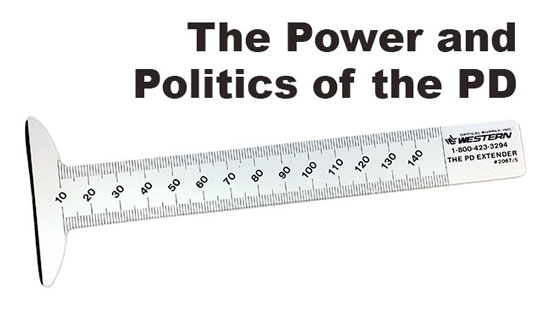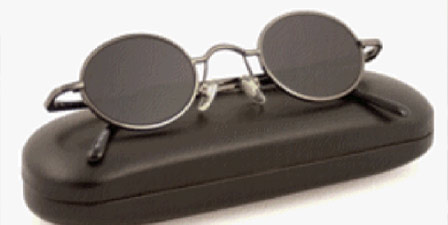
This is a reprint of a 2020 Continuing education divided into four parts.
Probably no question elicits more surprise and emotion from eye care professionals than when they're asked: “Can I have a copy of my Rx and PD?” Why? Because this innocent request is really an arrow aimed straight at the heart of historical "control" ECPs have had over the sale of prescription eyewear. If we step back and take a longer perspective, we can see that this is just the latest manifestation of a consumer empowerment process that began more than three decades ago.
In 1977, reacting to a rising tide of complaints that consumers were having trouble comparing eyewear prices because their eye care providers were reluctant to give up their prescriptions, the Federal Trade Commission took decisive and corrective action by issuing Eyeglasses I, also known as the Spectacle Prescription Release Rule, 16 CFR 456.1. Twenty-five years later, the FTC addressed a similar situation for contact lens wearers through the Fairness to Contact Lens Consumer’s Act. Importantly, both of these rules were designed to pry open an industry seen as unfairly acting in its own self-interest. Fast-forward to today, with the arrival of prescription eyeglasses offered online, and consumers find themselves once again squaring off for battle with their eye care professional. This time, they're being far more vocal in asking their government officials for help in freeing their PD from the clutches of their local eyewear establishment. NB: On September 4, 2015, the FTC, within their systematic review of current rules and regulations, again began soliciting public comments regarding the efficiencies, costs, benefits and impact of the regulations currently n place for eyewear and contact lenses.
The Battle for the PD
Eye care professionals argue that the pupillary distance is not, nor ever has been, a prescription parameter mandated for release under Eyeglasses 1. Consumers counter that only by having the Rx and their PD will they be able to freely shop the eyewear market. That this is clearly the intent of Eyeglasses 1 can best be seen in the latest revision from 2004 of Part g of 16 CFR 456.1, which states:
“A prescription is the written specifications for lenses for eyeglasses which are derived from an eye examination, including all of the information specified by state law, if any, necessary to obtain lenses for prescription eyeglasses.”
ECPs respond that by releasing the PD to a supplier outside their office, consumers are, in essence, removing them from responsibility as the eyewear's "general contractor" ー leaving unanswered the question of who is ultimately accountable for ensuring product quality, prescription efficacy and overall visual comfort. Additionally, eye care professionals admonish that by sourcing prescription eyewear online, consumers are separating out and thereby fragmenting the try-on, consultative, fitting, warrantee and other related services that have traditionally constituted most of the added-value and therefore increased cost represented in their office’s higher asking prices. ECPs see an obvious message is here: If you pay less, you’ll get less.
But as household discretionary income comes under greater downward pressure than ever before, consumers today are actively vetting the value they receive for every dollar spent. It's really no secret that the public views eyewear prices as arbitrarily high, and a CBS 60 MINUTES segment echoes this sentiment.
The New Eyeglass Consumer
Striving to obtain maximum value, shoppers today are increasingly willing to experiment with making trade-offs to enjoy lower prices. But most optical store owners have yet to begin to strategize how they will cope with a far more vigilant consumer. Unfortunately, by neglecting to outline even a simple fee schedule for eyewear related services, eye care professionals have inadvertently created a climate of resentment between themselves and their patients.
Today, as the consumer’s desire to obtain their PD runs smack into an eye care professional’s reluctance to hand it over, its time to take a look at exactly where the majority of money is made in optical.
Please look for part two of this four part series in the Opticians Handbook next week.
 Barry Santini, ABOM, graduated from New York Technical College in 1975 with an AAS in Ophthalmic Dispensing. He is a New York State licensed optician with contact lens certification, is ABO certified and was awarded an ABO Master in 1994. As sales manager for Tele Vue Optics from 1987 to 2003, Santini developed his knowledge of precision optics and has been an owner of Long Island Opticians in Seaford NY, from 1996 to present. Recently The Society to Advance Opticianry named Barry Santini, OO, as the 2016 Ophthalmic Optician of the Year. In addition, Santini is an amatuer astronomer and lecturer and plays bass trombone in the Brooklyn Symphony.
Barry Santini, ABOM, graduated from New York Technical College in 1975 with an AAS in Ophthalmic Dispensing. He is a New York State licensed optician with contact lens certification, is ABO certified and was awarded an ABO Master in 1994. As sales manager for Tele Vue Optics from 1987 to 2003, Santini developed his knowledge of precision optics and has been an owner of Long Island Opticians in Seaford NY, from 1996 to present. Recently The Society to Advance Opticianry named Barry Santini, OO, as the 2016 Ophthalmic Optician of the Year. In addition, Santini is an amatuer astronomer and lecturer and plays bass trombone in the Brooklyn Symphony.













